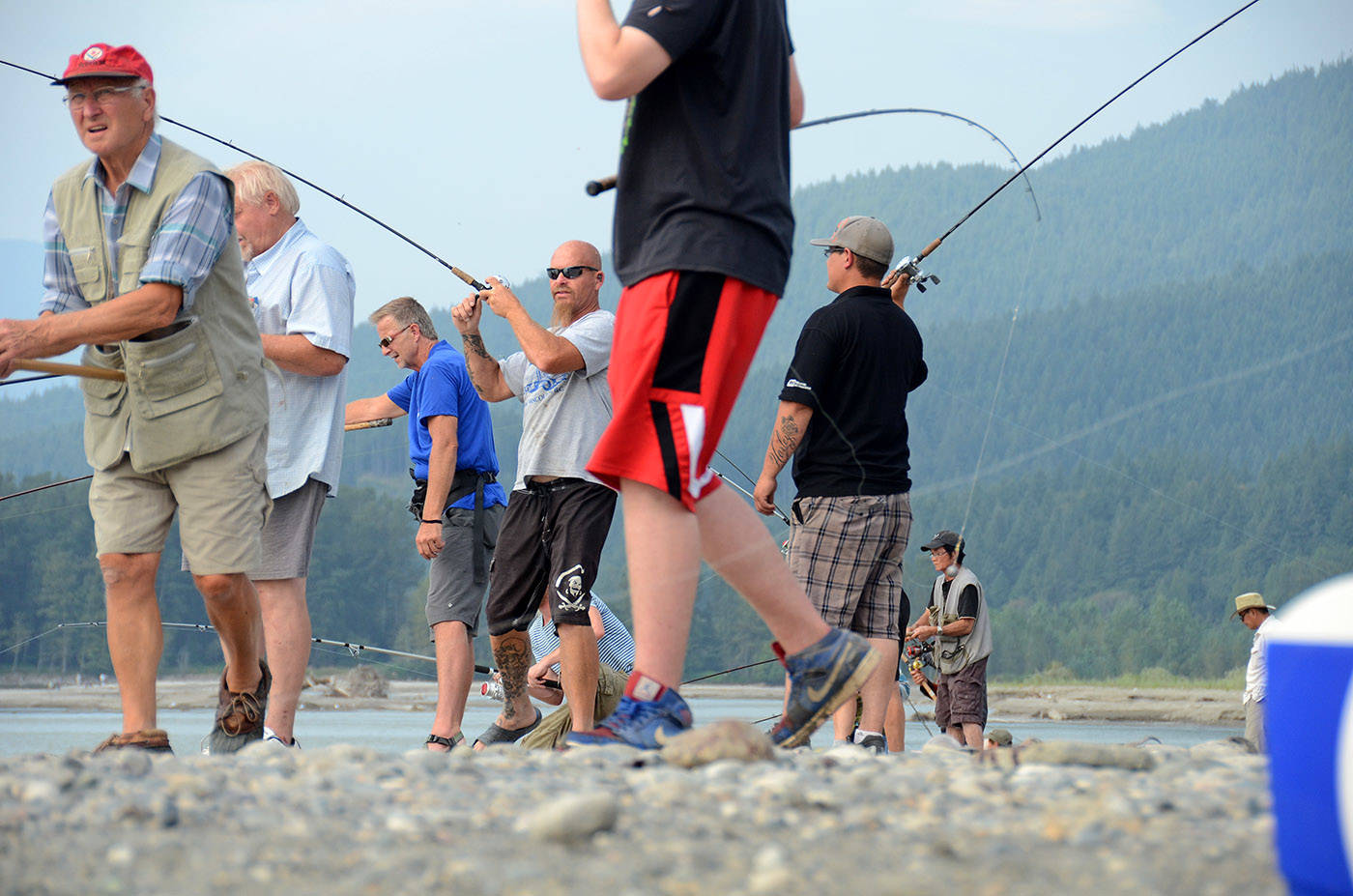Avoiding conflict on the Fraser River during sockeye madness takes both courtesy and consideration.
That’s the message from local fishing reps as the long-awaited sockeye fishery kicks into high gear this week.
The Fraser Valley Salmon Society is urging anglers to get in and get out quickly after bagging their limit, said FVSS president Dean Werk.
“Because the Chinook salmon numbers have been of concern, and we at the Salmon Society feel strongly that this sockeye fishery is primarily a harvest fishery, we’d like to encourage people to harvest their two sockeye a day, and then move on, instead of staying on to fish their limit of chinook.”
A little courtesy will go a long way.
“It is easier to manage the fishery if folks don’t stay all day in one spot,” Werk said. “A quicker turnover on the river of anglers makes for a safer and enjoyable time on the river for all user groups.”
Sockeye madness, in the form of a recreational fishing opportunity, happens once every four years, and is sometimes referred to as the “gong show” for the sudden influx of fisherman to Chilliwack.
They’re casting for some of the several million sockeye expected to be returning to their natal streams in the Fraser in 2018, challenged by the heat wave, and the fishing lines out to hook them.
The Fraser River Peacemakers group is trying to get the word out about the importance of “good river etiquette and sportsmanship” as the super-sockeye run puts both experienced and inexperienced anglers shoulder-to-shoulder on the gravel bars.
The tricky issue is that any clutch of sport fishers casting into the current, could overlap at times with local First Nation fishers on the river who will be out harvesting — possibly at the same time.
Due to declining numbers of Chinook, sockeye, coho and other species, First Nations fishing activities may not be as visible as in past years. Sto:lo fishers have been cut from up to three days per week decades ago, to fisheries windows where they only get a certain number of hours per week.
Anglers could unknowingly cast and get their lines tangled in First Nations nets, so they are being asked to pull their gear while the drift nets go by, or while the First Nations fishers are casting their nets. In turn the local Sto:lo fishers are asked to warn any anglers before they make a sweep of the river.
The protocol can be seen in the video about river manners put together by the Peacemakers.
“Fraser River Peacemakers members will be visiting launch sites to speak with aboriginal and non-aboriginal fishers in the coming weeks, to encourage them to exercise courtesy to one another while fishing is underway,” said Ernie Crey, Peacemakers co-chair and chief of Cheam First Nation.
It’s a way to make sure all users feel respected, and stay safe.
“Safe, respectful fisheries are the responsibility of all sectors if we are to preserve the Fraser River fishery for our respective future generations,” said Rod Clapton, Peacemakers’ co-chair and president of the B.C. Federation of Drift Fishers.
He is calling for “tolerance” to be shown by sports fishermen for sanctioned FN fisheries and providing access as well.
“Reciprocal respect is warranted and leaders within both communities are actively seeking solutions to conflict,” Clapton added.
The Peacemakers initiative came about after a fateful altercation. Chehalis Chief Willie Charlie was shot in the face in 2009 with a pellet gun. His boat was rammed after a drift net became entangled with the gear of some recreational anglers.
But it’s a whole different situation on the Fraser today.
That infamous altercation on the river became a catalyst for the creation of the Peacemakers, who have been working on the Lower Fraser toward conflict resolution through stewardship, river safety, and education ever since. Peacemakers earned a 2017 National Recreational Fisheries Award for “exemplary leadership” in building positive relations between First Nations harvesters and recreational anglers.
To see more on the various fisheries authorized by DFO:
• www.pac.dfo-mpo.gc.ca/fm-gp/fraser/index-eng.html
@CHWKjourno
jfeinberg@theprogress.com
Like us on Facebook and follow us on Twitter.
